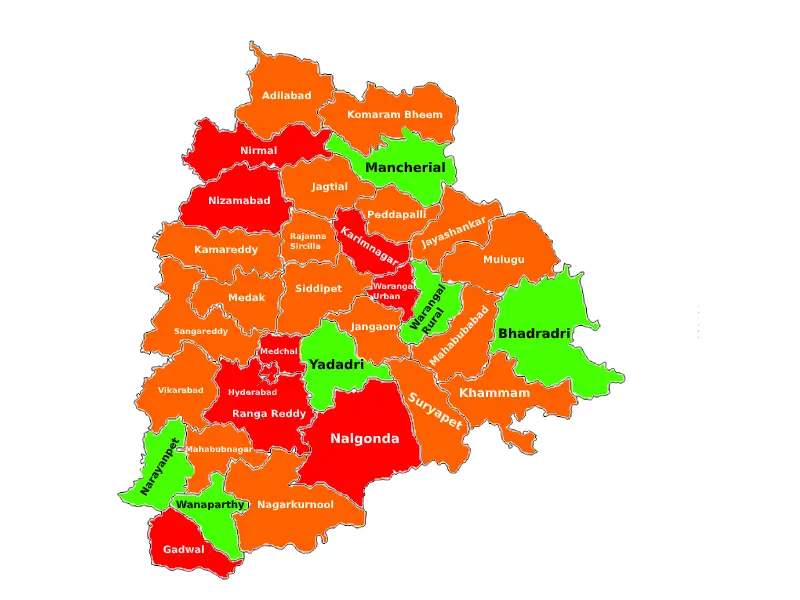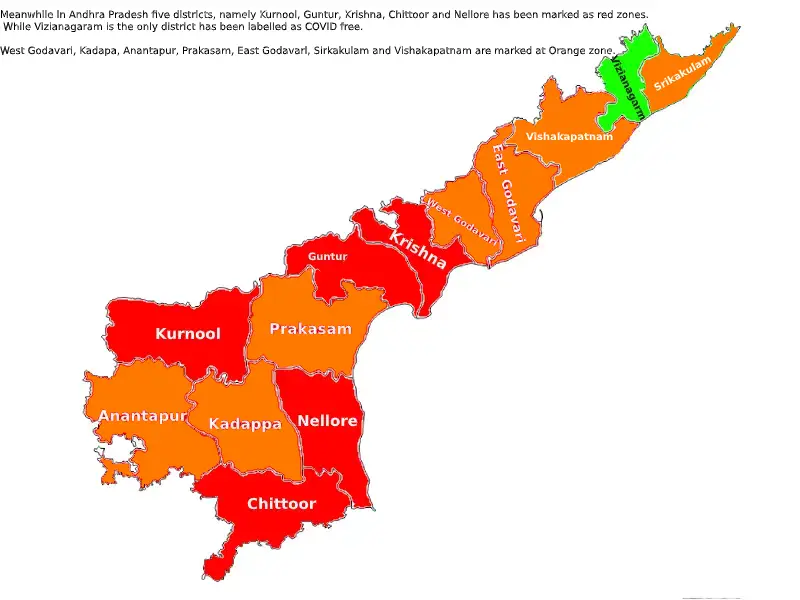Six districts in Telangana, five in Andhra under red zone: Centre
By Newsmeter Network
Highlights
- A district will be in the green zone if it has not reported any confirmed COVID-19 cases in the past 21 days
- A district in the orange zone is one that has not reported a case in the past 14 days.
- The Centre came up with these classifications based on the incidence of cases, the number of tests conducted, and surveillance feedback from the state
Hyderabad:Six districts in Telangana, that is, Hyderabad, Suryapet, Rangareddy, Medchal/Malkajgiri, Vikarabad, and Warangal (urban), fall under the red zone, according to a new list released by the ministry of health and family welfare.
The list included various districts in the country which fall under red, orange, and green zones. The Centre has identified 733 districts across the country and classified them into various zones with 130 districts in the red zone, 284 in the orange zone, and 319 districts in the green zone.
Eighteen districts in Telangana, meanwhile, fall under the orange zone. They are Nizamabad, Jogulamba Gadwal, Nirmal, Nalgonda, Adilabad, Sangareddy, Kamareddy, Kumaram Bheem/Asifabad, Karimnagar, Khammam, Mahabubnagar, Jagtial, Sircilla, Jayashankar Bhupalpally, Medak, Jangaon, Narayanpet, and Mancherial.
Nine districts in the state are under the green zone. These include Peddapally, Nagarkurnool, Mulugu, Kothagudem, Mahabubabad, Siddipet, Warangal (rural), Wanaparthy, and Yadadri Bhuvangiri.

Meanwhile in Andhra Pradesh five districts, namely Kurnool, Guntur, Krishna, Chittoor and Nellore has been marked as red zones. While Vizianagaram is the only district has been labelled as COVID free.
West Godavari, Kadapa, Anantapur, Prakasam, East Godavari, Sirkakulam and Vishakapatnam are marked at Orange zone.

A district will be in the green zone if it has not reported any confirmed COVID-19 cases in the past 21 days. While a district in the orange zone is one that has not reported a case in the past 14 days. The Centre came up with these classifications based on the incidence of cases, the number of tests conducted, and surveillance feedback from the state